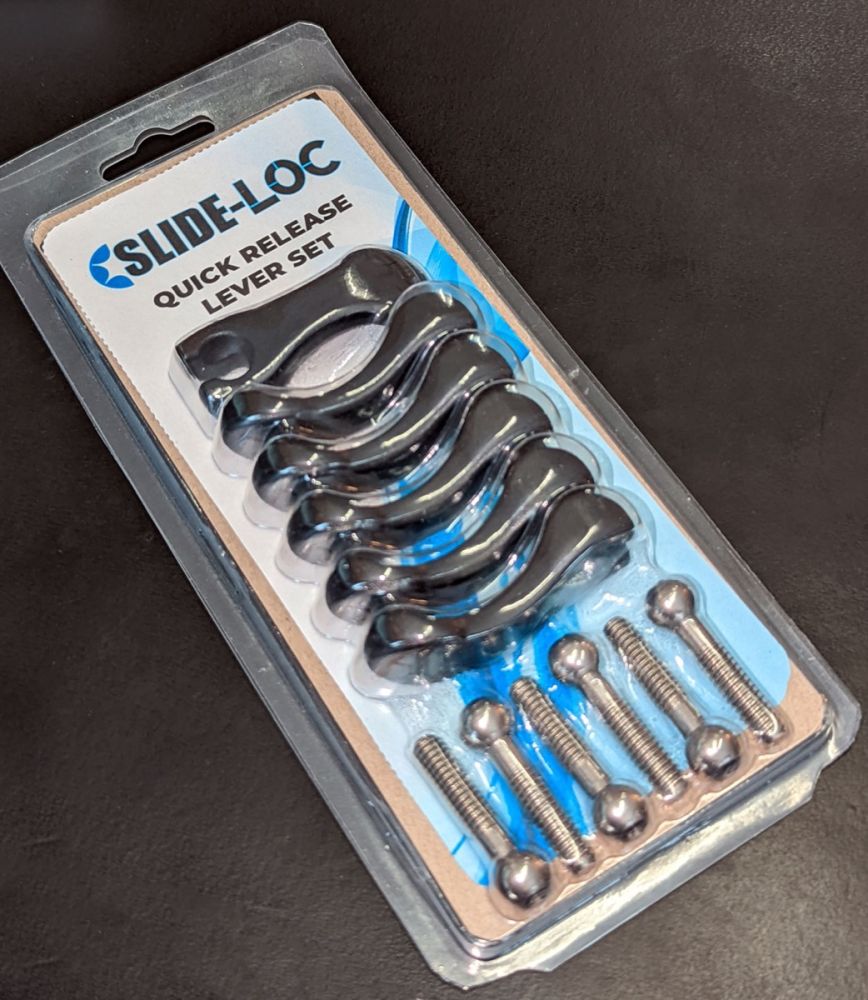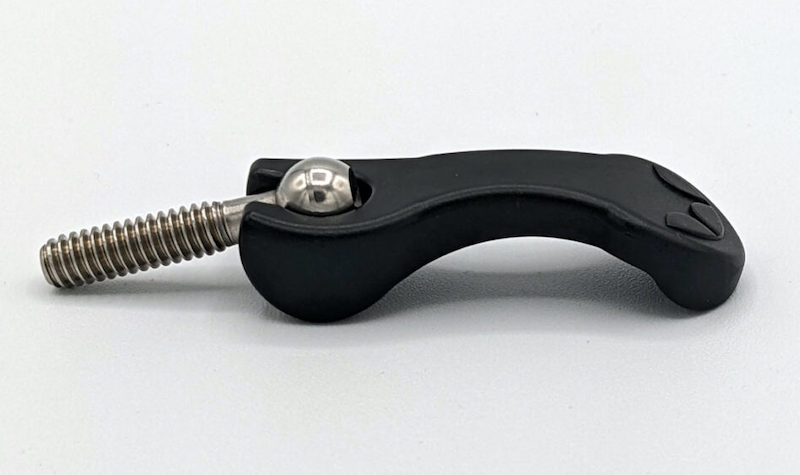The Slide-Loc Quick Release Lever is a novel invention that has the ability to finally make those pesky nylon screws and keyhole flanges an endangered species. Newer and small media reactors can get away with using small screw-on and twisting mechanisms to give users access to the reaction chambers but for the larger and heavy duty reactors the use of nylon screws is a foregone option.
For decades the nylon screw has been the only real choice for fastening calcium reactors, media reactors, and even larger protein skimmers but these have a number of problems in aquarium settings. First of all, some reefers with larger hands and sausage fingers find it borderline painful to try and release nylon screws from their threads and it’s just not a great user experience to remove or tighten them again.
Secondly, nylon tends to gradually swell in the presence of water and moisture over the long term so there’s a good chance of the screw breaking when trying to release it or trying to screw it back in nice and tight. It’s for this very reason that we know some reefers will absolutely avoid skimmers and reactors using any kind of nylon thumb screws – we’re looking at you gcaroll1969.
At last someone finally invented a viable solution to replace the dreaded nylon screws and best of all, it’s a backward-compatible replacement for all devices using them. The Slide-Loc Quick Release Lever is made of 316 Stainless Steel for the screw and the screw head connects with a durable anodized aluminum lever which functions both as the compression part of the fastener as well as adjustment tool to screw down and tighten the patent-pending mechanism.
Slide-Loc is making the Quick Release Lever available in a few standard sizes including the ubiquitous 1/4-20 as well as M5, M6, and M8. A six pack of these handy mechanisms will set you back a very fair $29.99 for packs of six and will start shipping this April to transform the experience of getting in and out of your skimmers and reactors currently held together with thumb screws.




